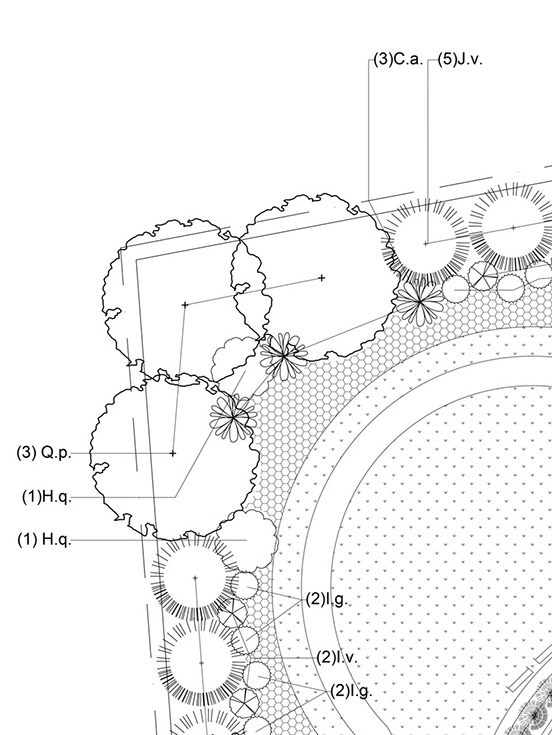I've had the great opportunity to work with Mike Ross to gain experience in undergraduate course design and teaching, Mike is an Associate Professor in the Department of Plant Sciences at University of Tennessee, Knoxville. He allowed me to plan out two courses: Sustainable Landscape Construction in Fall 2019, and Computer Aided Landscape Design in Spring 2020. The following is a brief summary of the course, the materials I created, and what I gained from this experience.
SUMMARY
Sustainable Landscape Construction is an introduction to issues of sustainability and resilience in the designed and built landscape. In the sequence of the Sustainable Landscape Design concentration sequence, this is the class where students are exposed to both practical construction precedents as well as construction documentation. For this course, I put together the course schedule and assignments for sophomore-senior level students.
The assignments included drawing observations (Sketch Details), conducting research (Materials Presentation), and writing narratives (What is Sustainability?). All of the work accumulated into a final project that mimicked a construction documentation sheet, based on a constructed landscape architecture project in Tennessee.
Student Work
(as a response to a sustainable sourcing prompt)
/// While a project could be perfectly designed with only the most sustainable materials used, the very same project could also be detrimental to the health of our environment solely on the footprint it left to follow the path to the site. This is where we have to extend our thinking and consider the process of extracting the material from its original source or how much carbon and energy emissions go into forming this material, and additionally how much fuel is burned transporting it from its manufacturing site to our building site.
[...]
It is these factors that add up and should be used to determine the decisions between a locally sourced material compared to a more “sustainable” material shipped in from several states over. We have to begin weighing the worth of these materials not only in the short term present day, but also looking from a long term perspective. Which materials are truly worth the extra expense now in order to create a larger impact in the future? _HW ///




Students in Action


(final 'sustainability narrative')
/// As a horticulturist going into the green industry, things I will likely encounter are costs and impacts of fertilizers, PGR’s, shipments from nurseries or wholesalers to the project, and impacts of plants in an area such as natives, exotics, and invasive. While my knowledge on these subjects is limited to my college experience, my future experience will cement my understanding of how all these paths connect and what I can do to make the best decision. Not only for myself, but also for those I encounter in my career such as coworkers, bosses, and even those who may work under me one day. Not only is it just about what decisions I can make, but also how my decisions impact those around me. How can I share my sustainability narrative in a way that will make others question their own? Before this class I was never asked what my sustainability narrative was. I wouldn’t even know how to begin answering this. My hope is that as I progress in my career, my narrative will change, just as the world does. I hope to keep my core values on sustainability, but to also be flexible and open to the new practices I will encounter. Sustainability is a challenge. It will keep challenging me, and I hope that I can keep challenging myself in the way that I practice sustainability in whatever field I find myself in. _WA ///
